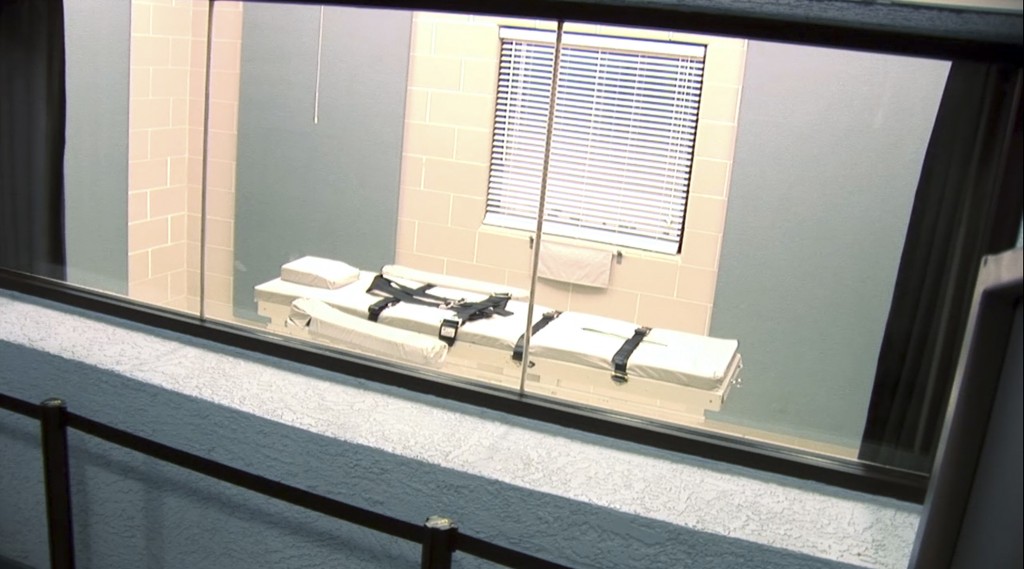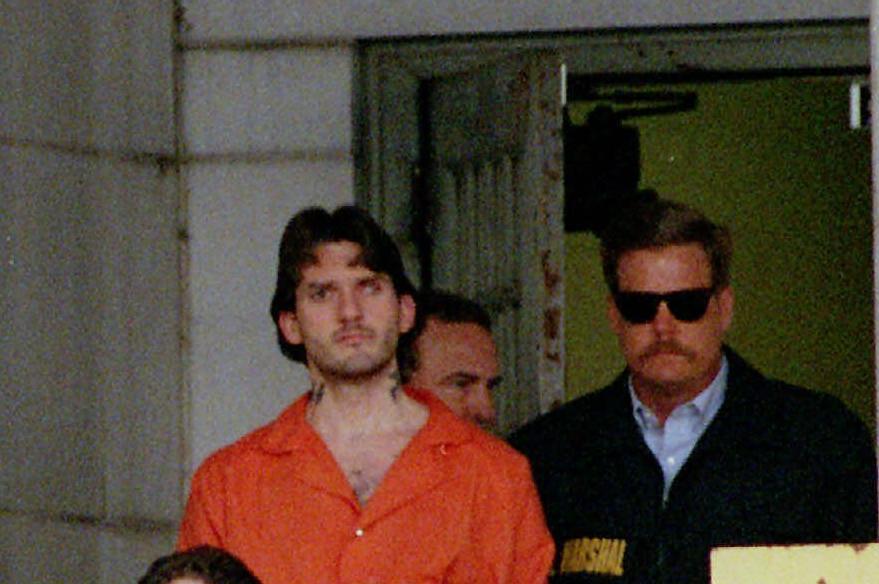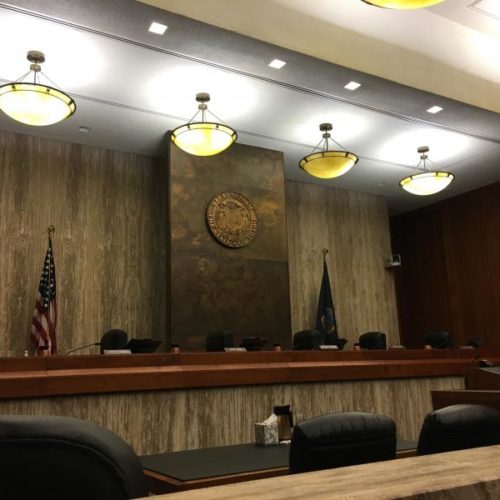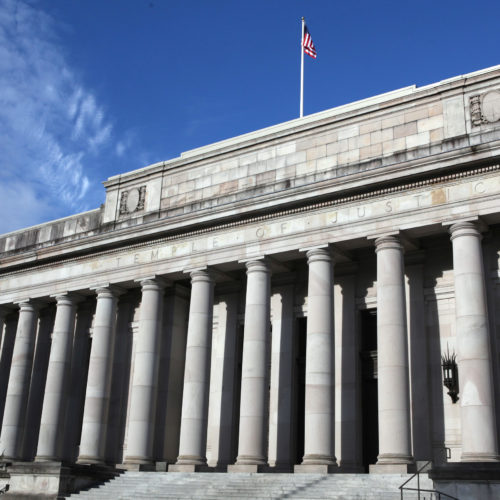
Americans Are Divided On Federal Executions. Why Is The Trump Administration Reviving Them?
Read On
BY LAURA SANTHANAM / PBS NEWSHOUR
The Trump administration’s decision to reinstate the federal death penalty, beginning with the executions of five men later this year, highlights a growing partisan divide over capital punishment at a time when its use has been decreasing. Polls show a strong majority of Republicans support the death penalty, while a majority of Democrats do not.
The expected executions, scheduled for this winter, would be the first time the federal government has executed anyone in 16 years — a time period that encompasses both Democratic and Republican administrations.
“The Justice Department upholds the rule of law — and we owe it to the victims and their families to carry forward the sentence imposed by our justice system,” Attorney General William Barr said about the move in a press release on Thursday.
But many see the use of the death penalty, at the federal level in particular, as arbitrary in terms of who ultimately faces that punishment — a sentiment that has affected its public support, said Robert Dunham, director for the Death Penalty Information Center.
The change also comes as the Justice Department shifts policy on what chemical it will use to kill the men, a topic of public and legal debate around the use of lethal injection drugs.
Over the last two decades, capital punishment has fallen overall, and at the state level especially, Dunham said. Nearly two dozen states have abolished the death penalty, and public opinion supporting executions has followed that slump.
“The national trend is [moving] away from capital punishment,” Dunham said.
Could public opinion and partisanship have played a role in Trump administration’s decision? The PBS NewsHour asked experts for their insights.
Who Is Being Executed?
The five men who will stand execution have all been convicted of killing children, among other victims. All were found to be guilty of federal crimes due to different specific details of their cases, such as where the murder took place, or if they had transported a minor over state lines.
“Under Administrations of both parties, the Department of Justice has sought the death penalty against the worst criminals, including these five murderers, each of whom was convicted by a jury of his peers after a full and fair proceeding,” Barr said in his statement.
The inmates include: Daniel Lewis Lee, a white supremacist with ties to the Inland Northwest and Spokane, who will be killed on Dec. 9, Lezmond Mitchell on Dec. 11, Wesley Ira Purkey on Dec. 13, Alfred Bourgeois on Jan. 13, 2020, and Dustin Lee Honken on Jan. 15, 2020. These men have run out of appeals to their death sentences, according to the Justice Department, and all five will be put to death at the same prison, the U.S. Penitentiary in Terre Haute, Indiana, a press release noted.
To execute them, the Justice Department have proposed using a single, acutely toxic barbiturate used to euthanize animals — pentobarbital. That marks a departure from the three-chemical protocol used in previous executions but an option increasingly adopted amid continued debate around the drugs used in lethal injections. Since 2010, the Justice Department said 14 states have used pentobarbital in more than 200 executions. In 2018, drug companies distanced themselves from executions and refused to sell their product to be used for lethal injections.

Danny Lewis Lee leaving a federal courthouse in Little Rock, Arkansas, in May 1999. Lee, a white supremacist from the Spokane, Wash. region, is scheduled to be the first federal inmate executed since 2003 after the Justice Department announced Thursday it would revise its stance on capital punishment. CREDIT: SPENCER TIREY/AP
But it’s unclear why the federal government is assuming responsibility for the execution of these men, Dunham said. In all of these cases, they could be executed by the state.
This “is a classic state interest,” Dunham said, adding that there is a false myth that the federal death penalty is somehow better applied than at the state level. How this punishment is given out remains arbitrary and there are resource constraints when it comes to such cases, he said. African Americans are disproportionately sentenced to death compared to whites, according to data from the Death Penalty Information Center, and federal prosecutors are just as prone to making mistakes or pursuing erroneous convictions as their peers at the state level.
“The fact of the matter is the federal death penalty has all the same kinds of problems that state death penalties do,” he said.
Public Opinion And Politics
Twenty-one states and the District of Columbia have abolished the death penalty, according to data from the Death Penalty Information Center. In 2018, states executed 25 people — a record low. A year earlier, the state of Arkansas stirred national outrage when the state announced plans to put eight men to death in less than two weeks around the Easter holidays.
That’s down from 98 executions that took place in 1999, a time when 78 percent of Americans said they supported the death penalty. Since then, support has waned.
According to Pew Research Center, 54 percent of U.S. adults said they backed the death penalty in 2018,and partisanship quickly emerges when you look at numbers, said Jocelyn Kiley, Pew’s associate director for U.S. politics.
“Parties are much more divided over this question than they historically were,” she said.
In 2018, a clear majority of Republicans — 77 percent — said they favored the death penalty, while 35 percent of Democrats said they supported capital punishment, Kiley said.
And white Americans were more likely to say they support the death penalty than African American or Latino respondents, Pew’s polling data suggested.
A few years earlier, in 2015, 49 percent of Americans said they supported the death penalty, according to Pew polling data.
With a nearly even split in opinion, Americans overall aren’t ready to abolish the death penalty, as some Democratic presidential candidates such as Julian Castro have proposed. In a recent PBS NewsHour/NPR/Marist poll, 58 percent of U.S. adults said it was a bad idea to get rid of the death penalty altogether, including 79 percent of Republicans, who are Trump’s core of voters. Thirty-six percent said it was a good idea to abolish capital punishment.
“What we’re left with is a punishment that is fading away in most of the country but is still practiced in a few outlier jurisdictions,” Dunham said. “It looks as though the federal death penalty may be becoming an outlier where it’s going forward against the flow of American public opinion.”
History Of Federal Death Penalty
Compared to executions carried out by states, the federal death penalty has been used rarely. Since 1927, when the Bureau of Prisons started keeping records, 37 federal executions have occurred. The 1930s saw the most U.S. executions in any 10-year period, with a total of nine.
In 1994, to clarify when federal capital punishment should be used, Congress deemed high-profile crimes such as espionage, treason and political assassinations as deserving of that sentence, according to the Federal Death Penalty Act.
On June 11, 2001, the U.S. government executed Timothy McVeigh for the role he played in the 1995 bombing of a federal building in Oklahoma City, Oklahoma, killing 168 people, including 19 children. His was the first federal execution since 1963.
Nearly two years later, on March 18, 2003, the federal government lethally injected Gulf War veteran Louis Jones, Jr. He had confessed to kidnapping Tracie Joy McBride, 19, at an Air Force base in Texas before he raped and killed her. He argued in his defense that exposure to nerve gas during the Gulf War had led to his killing McBride.
And until the five men named on Thursday are put to death, Jones stands as the last execution performed by the federal government.
Laura Santhanam is the Data Producer for the PBS NewsHour
Copyright 2019 PBS NewsHour. To see more, visit pbs.org/newshour
Related Stories:

State of Idaho to pursue death penalty against Kohberger
Bryan Kohberger enters the courtroom for a motion hearing regarding a gag order, Friday, June 9, 2023, in Moscow, Idaho. Kohberger is accused of killing four University of Idaho students

Where Did Idaho Get Its Execution Drugs? A State Supreme Court Case May Reveal Hidden Records
The Idaho Supreme Court is expected to decide next year whether prison officials must reveal the past source of their execution drugs. A University of Idaho professor’s public records request is at the center of the case.

Washington State Supreme Court Strikes Down Death Penalty
The Washington state Supreme Court struck down the state’s death penalty Thursday, Oct. 11, and converted all death sentences to life in prison.















